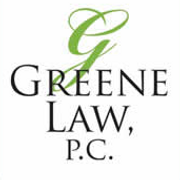
Under personal injury law, you may hold those who cause you harm financially accountable. By filing a tort claim, you can seek compensation for both economic and non-economic damages. In order to recover a payout, though, you’ll have to prove certain elements, which ultimately depend on whether your claim involves a negligent or intentional tort.
How to Prove Negligence
Negligence is characterized by a breach of duty of care. For example, motorists owe it to those in traffic around them to remain alert, awake, and sober when behind the wheel. As such, driving while drowsy would be considered a breach of this duty and, subsequently, negligent.
Should you get hurt in some kind of accident, you’ll have to demonstrate how the defendant owed you a duty of care and proceeded to breach said duty. You’ll also need to prove how the breach was directly responsible for your injuries. Finally, you’ll have to demonstrate that you incurred actual damages as a result of the associated injuries.
How to Prove Intentional Misconduct
Whereas negligence is an inadvertent breach of duty, intentional misconduct occurs when someone purposely sets out to cause harm. Examples of intentional torts that may warrant legal action include assault and battery, false imprisonment, libel, and slander.
 To win an intentional personal injury claim, the plaintiff must prove that the defendant was purposely trying to hurt him or her. Like targets of negligence, targets of intentional torts must also prove that they incurred damages as a direct result of the defendant’s malicious conduct.
To win an intentional personal injury claim, the plaintiff must prove that the defendant was purposely trying to hurt him or her. Like targets of negligence, targets of intentional torts must also prove that they incurred damages as a direct result of the defendant’s malicious conduct.
How to Demonstrate Damages
Regardless of whether you were the victim of negligence or intentional misconduct, you may seek compensation for both monetary and non-monetary losses. Examples include hospital bills, lost wages, property damage, mental anguish, loss of enjoyment in life, and pain and suffering. You can demonstrate these and other damages using relevant records, receipts, invoices, photographs, statements from medical experts, and personal injury journal entries.
In cases where the defendant’s conduct constituted malice or a wanton violation of the plaintiff’s rights, punitive damages may also be available. Generally, most intentional torts will warrant a punitive award, while most negligent torts won't. In Connecticut, punitive damages are usually capped at the cost of litigation plus attorney fees.
For help building your personal injury claim, turn to Greene Law PC in Farmington, CT. Backed by 25 years of experience, this law firm is committed to helping clients secure the best outcomes possible. Whether you want to file a bankruptcy petition, fight for child custody, or complete a complicated real estate transaction, you can turn to them. To explore all their areas of practice, visit their website. To schedule a consultation, call (860) 676-1336.
About the Business
Have a question? Ask the experts!
Send your question

